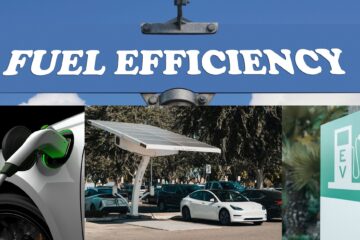Introduction
The transition to net-zero fleet is not for fleet management to solve. There is too much that needs to be done across the organisation for the transition to net-zero fleet to be the sole responsibility of fleet management. Effective development and implementation of the net-zero fleet transition program requires a whole-of-council approach.
Transitioning to Net-Zero Fleet
According to recent findings from the OC&C’s Report on Electrifying Australia’s Fleets: Closing the “Say-Do” Gap, commercial fleets account for 48% of vehicle sales and contribute approximately 15-20% of Australia’s total net emissions. Electric vehicles make up less than 5% of fleet purchases and represent less than 1% of corporate fleets, despite 20% of ASX200 companies adopting EV transition plans.
Our own recent survey of Victorian councils shows that while most councils have adopted net-zero emissions targets, only 45% of council respondents have a transition plan that commits to transitioning fleet to electric vehicles. More needs to be done to support and assist councils with development and implementation of Net-Zero Fleet Transition Plans.
Alignment and Action
Councils committed to net-zero fleet require organisational alignment against this commitment and action to implement the transition including:
| Sustainability Role: Strategic Leadership and Planning | Establish corporate emissions reduction targets, including fleet-specific goals aligned with broader council net-zero objectives. Develop and maintain policy frameworks that embed sustainability and low-emission objectives into all fleet-related decisions. Coordinate the preparation and implementation of a Net-Zero Fleet Transition Plan, integrating fleet, infrastructure and operational considerations. |
| Fleet Management Role: Technical Guidance and Program Design | Facilitate needs assessments across service areas to define functional vehicle requirements. Lead the development of technical specifications for vehicles that meet operational needs while aligning with emissions goals. Design and maintain a 10-Year Fleet Replacement Program, incorporating a progressive transition to BEVs/PHEVs and aligning vehicle acquisition with infrastructure and funding timelines. Coordinate planning for charging infrastructure in conjunction with Property and Facility teams, ensuring operational reliability. |
| Operational Teams Role: Service Delivery and Operational Insight | Contribute to vehicle specification development by providing practical insights on the performance and suitability of low/zero emission vehicles within their service context. Evaluate the operational effectiveness of deployed BEVs and PHEVs, offering feedback to Fleet and Sustainability teams to inform ongoing procurement and replacement decisions. Support behaviour change initiatives to enable smooth integration of new technologies and address workplace readiness challenges. |
| Property and Facility Management Role: Infrastructure Planning and Delivery | Lead the design and rollout of charging infrastructure, ensuring coverage across operational depots, council facilities and other strategic locations. Integrate charging solutions into property capital works programs and upgrade schedules, with a focus on ensuring capacity, accessibility and resilience. Ensure infrastructure readiness is aligned with the planned fleet replacement timeline to avoid operational delays or underutilised assets. |
| Finance Role: Budget Strategy and Investment Planning | Develop a long-term funding strategy that supports the phased procurement of low/zero emission vehicles and associated infrastructure. Allocate funding for capital and operating expenditure across the life of the 10-Year Fleet Replacement Program. Assess whole-of-life costs (including TCO and carbon offset implications) to support evidence-based decision-making and ensure financial sustainability. |
| Procurement Role: Enabling Low-Emission Vehicle Acquisition | Establish procurement policies and procedures that mandate or preference low/zero emissions vehicles where operationally viable. Design procurement frameworks that accommodate innovative supply models, such as leasing, group purchasing and supplier partnerships. Ensure compliance with environmental standards, including emissions performance benchmarks and lifecycle considerations. |
Oversight
To enable this coordinated response, the council’s elected members and executive leadership need to set priorities, allocate resources and maintain organisational focus on net-zero fleet. Councils and its executive need to adopt an appropriate level of oversight to ensure the progress as planned.
Net-Zero Fleet Project Team
The timing of the charging infrastructure rollout is critical to the successful transition to EVs. Not having sufficient chargers to meet operational needs of new EVs will be a significant blow to the organisation’s confidence in the transition process. The planning for acquisition of new BEVs must be coordinated with the planning for new charging infrastructure. The coordination of delivery of charging infrastructure and EVs should be delegated to a Net-Zero Fleet Project Team comprised of:
- sustainability;
- fleet management;
- operational teams and depot management;
- property services and facilities;
- finance; and
- procurement.
In this integrated governance approach, the Net-Zero Fleet Project Team acts as the central mechanism for aligning charging infrastructure investment with fleet replacement cycles, ensuring the transition to electric vehicles is operationally viable, financially prudent and strategically credible.
Conclusion
While some progress is being made towards the 2050 net-zero emissions targets locally and internationally, it appears that emissions from the transportation sector have either stalled or are continuing to grow – largely driven by recovery in aviation and road travel. The Climate Change Authority confirms that rebound in transport activity post‑COVID is a primary driver of overall emissions growth in 2022–23.
Without additional systemic changes – for example, encouraging modal shift to public and active transport sectors – adoption of EVs and efficiency standards alone may not reverse the upward trend, especially given SUV and utility preferences that consume more fuel per kilometre.
The transport sector accounted for about 21% of Australia’s national emissions in 2023, with road transport comprising around 83% of that total. Since 2005, transport emissions have risen by about 19%. Current data both globally and in Australia show transport emissions are not yet declining and have either stalled or continued to grow. The transport sector remains a critical obstacle to achieving both national and international emissions reduction targets, unless further policy action and systemic change occur.
More needs to be done to support and assist councils with development and implementation of Net-Zero Fleet Transition Plans.

EV Fleet Expo
There are many players that need to be informed about progressing the council’s transition towards net-zero fleet. We are organising an EV event for participants to discover what’s next with:
- BEV passenger vehicles (pool cars <$50,000)
- utilities, vans and small trucks (BEVs and PHEVs)
- managing EV battery health, charging infrastructure and EV maintenance
- EV leasing and financing.
Our focus is on operational vehicles used to deliver day-to-day services. The event is being designed to:
- promote the transition of operational vehicles to BEVs and progress towards emissions reduction targets
- attract participation from fleet management, sustainability and operational teams from Victorian councils and water sector.



0 Comments